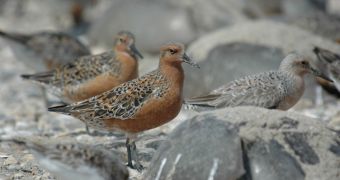Experts at the United States Geological Survey (USGS) announce the results of a new study they conducted on horseshoe crabs, which revealed that these creatures are in constant decline due to climate change.
The team reveals that it used genomics and related analysis tools in order to figure out the numbers horseshoe crabs existed in historically, and then to compare them to the estimates of existing populations.
According to investigators, the sharp decline in crab levels can be associated with the climate change that has been taking place since the end of the last Ice Age.
USGS scientist Tim King reveals that, unless steps to ensure conservation are not taken, the horseshoe crab population may decline even further in the future, due to the growing influence of global warming.
King is also the lead author of a new paper detailing the findings, which is published in the latest issue of the esteemed scientific journal Molecular Ecology.
“Using genetic variation, we determined the trends between past and present population sizes of horseshoe crabs and found that a clear decline in the number of horseshoe crabs has occurred that parallels climate change associated with the end of the last Ice Age,” King explains.
But climate change is not the only factor threatening these marine creatures. Previous studies have demonstrated that overfishing is also partially to blame.
Researchers have determined in past investigations that fishermen harvesting the creatures for use as fishing bait, or for the pharmaceutical industry, are also putting major dents in the overall population.
“Population size decreases of these ancient mariners have implications beyond the obvious,” King explains
“Genetic diversity is the most fundamental level of biodiversity, providing the raw material for evolutionary processes to act upon and affording populations the opportunity to adapt to their surroundings,” he adds further.
“For this reason, the low effective population sizes indicated in the new study give one pause,” the expert believes.
The new paper is entitled “Population dynamics of American horseshoe crabs—historic climatic events and recent anthropogenic pressures.”
Experts from the Aarhus University in Denmark, and the University of Gothenburg in Sweden also contributed to the investigation.

 14 DAY TRIAL //
14 DAY TRIAL //